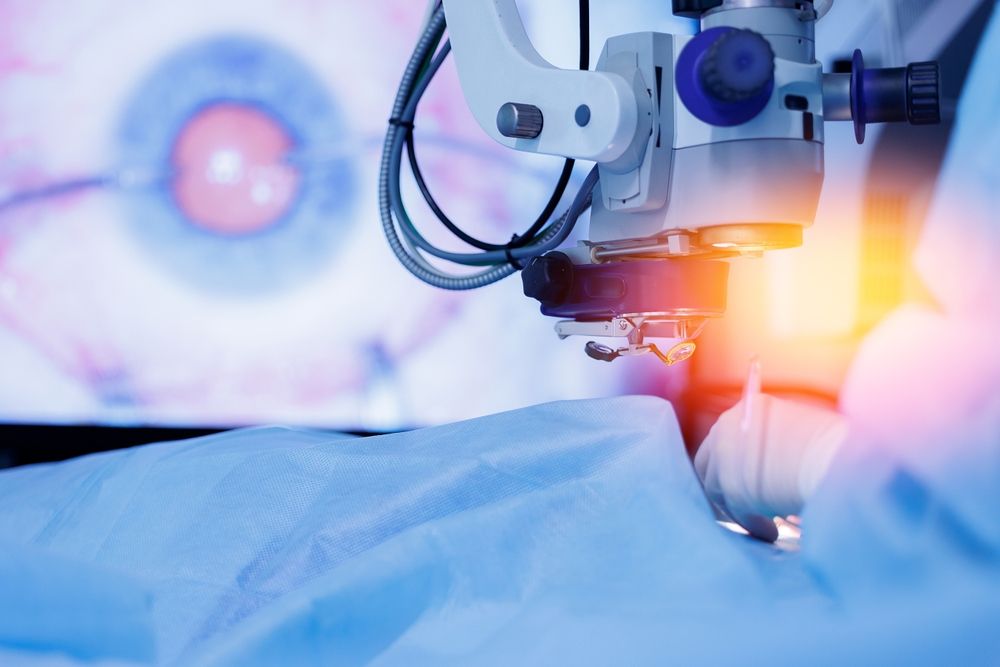For individuals looking to break free from glasses and contact lenses, refractive surgery offers a long-term solution to vision correction. Two of the most well-known procedures—LASIK and PRK—are both proven methods that reshape the cornea to improve how light is focused onto the retina. While both procedures share a common goal, they differ significantly in technique, recovery time, and suitability for different eye types.
At Colorado Eye Clinic in Greenwood Village, Dr. Abed Namavari helps patients throughout the Denver area determine which vision correction option aligns with their needs, lifestyle, and ocular health. Choosing between LASIK and PRK isn’t just about convenience—it involves a careful analysis of corneal thickness, pupil size, occupation, and personal comfort with the healing process. An experienced ophthalmologist plays a key role in making this decision clear and informed.
How LASIK Works
LASIK, or laser-assisted in situ keratomileusis, is a widely popular procedure that uses a femtosecond laser to create a thin flap in the cornea. Once the flap is lifted, an excimer laser reshapes the underlying corneal tissue to correct refractive errors such as nearsightedness, farsightedness, and astigmatism. The flap is then repositioned, where it naturally adheres without stitches.
One of LASIK’s major advantages is its rapid recovery. Most patients experience noticeably improved vision within 24 hours, with minimal discomfort. It is often chosen by individuals who want to return to their normal activities quickly. However, not everyone is an ideal candidate for LASIK. Patients with thin corneas, irregular topography, or certain eye conditions may be better suited for alternative procedures. Dr. Namavari evaluates these factors during pre-operative assessments to ensure long-term success and safety.
What Is PRK and How Does It Differ?
PRK, or photorefractive keratectomy, is another type of laser eye surgery that predates LASIK and remains an excellent option for many candidates. Unlike LASIK, PRK does not involve creating a corneal flap. Instead, the outer epithelial layer of the cornea is gently removed to expose the underlying tissue, which is then reshaped with the excimer laser. A bandage contact lens is placed over the eye to promote healing during the epithelial regeneration process.
The absence of a corneal flap makes PRK a safer choice for patients with thinner or irregular corneas, or for those engaged in high-impact professions or sports where eye trauma is a risk. However, PRK recovery is slower and more uncomfortable than LASIK. Vision typically improves gradually over several days to a few weeks. While both procedures yield comparable long-term outcomes, the early postoperative experience is quite different. Dr. Namavari thoroughly reviews these differences during consultations at Colorado Eye Clinic to guide patients toward the most appropriate choice.
Candidacy Considerations: LASIK vs. PRK
Determining which procedure is right for you begins with a comprehensive eye exam. Factors such as corneal thickness, surface irregularities, tear film stability, and pupil size all contribute to surgical eligibility. LASIK generally requires a thicker cornea to safely create a flap, while PRK can be performed on thinner corneas because no flap is involved.
Patients with chronic dry eye, a history of corneal scarring, or certain autoimmune conditions may find PRK to be the safer option. Similarly, those with active lifestyles or professions that carry a higher risk of eye trauma—such as athletes, law enforcement officers, or military personnel—often benefit from the flapless nature of PRK. LASIK, by contrast, remains a strong option for individuals with stable prescriptions, healthy eyes, and no contraindications for flap creation.
Dr. Namavari uses advanced imaging technology to assess corneal shape, thickness, and surface integrity. In Greenwood Village and throughout Denver, Colorado Eye Clinic is recognized for providing meticulous evaluations that help minimize risk and optimize surgical outcomes.
Comparing Recovery and Results
Recovery time and healing experience are among the most significant distinctions between LASIK and PRK. LASIK typically involves only mild discomfort and yields functional vision within a day or two. Most patients can return to work and drive within 24 to 48 hours. There may be some initial dryness or glare, but these effects usually resolve within a few weeks.
PRK, on the other hand, involves a longer and more variable healing period. Because the epithelial layer must regenerate, discomfort and blurred vision are more pronounced in the first few days. Vision may take several weeks to stabilize, although full visual acuity is generally achieved within a few months. Patients must also avoid strenuous activity and follow a strict medication regimen during the healing phase.
Despite the differences in recovery, long-term results from both LASIK and PRK are highly comparable. The majority of patients achieve 20/20 vision or better, depending on their original prescription. Dr. Namavari ensures that patients understand the trade-offs in healing time versus structural suitability, helping them make an informed, confident decision.
Risks and Safety Profiles
Both LASIK and PRK are considered extremely safe when performed by a qualified ophthalmologist. However, as with any surgical procedure, there are risks involved. LASIK carries a small risk of flap complications, such as dislocation or epithelial ingrowth. Dry eye symptoms are also more common post-LASIK, particularly in patients with pre-existing dryness.
PRK avoids flap-related issues but has its own challenges. The longer healing process increases the window for discomfort and requires more frequent follow-up care. There’s also a slightly increased risk of corneal haze or scarring during healing, although modern medications and techniques have greatly reduced this risk.
Dr. Namavari carefully screens for risk factors and discusses potential side effects in detail. Patient safety remains the top priority at Colorado Eye Clinic, and all procedures are performed with state-of-the-art equipment and best practices.
Personalized Recommendations from a Trusted Ophthalmologist
There’s no one-size-fits-all answer when it comes to vision correction surgery. Both LASIK and PRK offer life-changing benefits, but the right choice depends on your anatomy, vision goals, and personal preferences. At Colorado Eye Clinic in Greenwood Village, Dr. Abed Namavari combines expert diagnostics with a patient-centered approach to guide individuals through their options.
With years of experience in refractive surgery and a deep understanding of corneal health, Dr. Namavari helps patients in Denver and beyond feel confident in their decision. Whether you’re considering LASIK for quick recovery or PRK for long-term safety, a comprehensive consultation ensures your choice supports both your visual clarity and your ocular well-being.
If you’re ready to explore vision correction and want answers tailored to your needs, schedule a consultation with Colorado Eye Clinic. The journey to clearer vision begins with expert advice and trusted care.
Resources
Sia, R. K., et al. (2015). Visual and Refractive Outcomes After LASIK and PRK: A Review. Current Ophthalmology Reports
Mehta, J. S., & Manche, E. E. (2020). Surgical Correction of Refractive Error: LASIK and PRK. Ophthalmology Clinics of North America
Shortt, A. J., et al. (2013). Photorefractive Keratectomy Versus Laser-Assisted In Situ Keratomileusis for Myopia. Cochrane Database of Systematic Reviews

